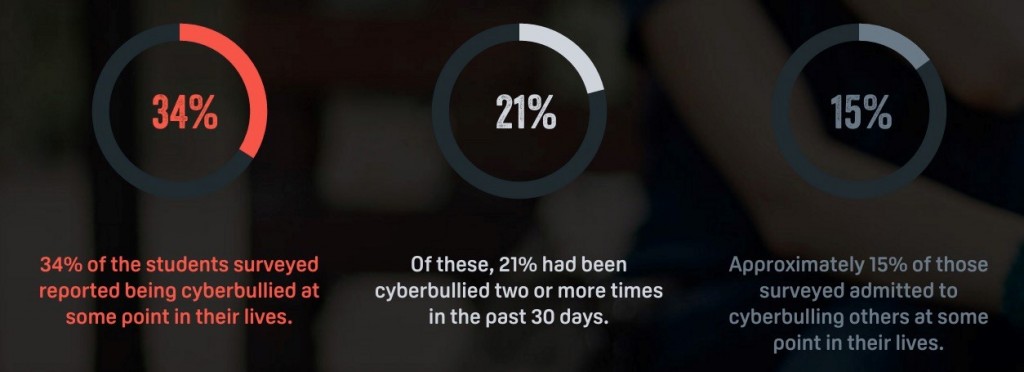
5 Things You Should Know About Cyberbullying and Your Child with Special Needs
The explosion of the digital age has opened up a window to be virtually connected to anyone in the world; and while online connection has created opportunity beyond the imaginable, our society is now faced with a major problem resulting from this: cyberbullying. The internet enables bullying to extend far beyond the classroom walls and leaves victims in target range all of the time.
The Reality of Cyberbullying
Cyberbullying is described as when one uses electronic communication to threaten, harass, or intimidate a victim. This can be done anywhere online or through text messages, making cyberbullying nearly impossible to escape from if you fall victim. This cyberbullying prevention guide found that over 34% of students surveyed reported to being cyberbullied at some point in their lives and as many as 21% of these students been cyberbullied at least twice in the past month. Additionally, studies found that students with special needs have 2-3 times the likelihood of being bullied than any other peer group. 
How Does Bullying Affect a Child with Special Needs Differently?
Growing up with an autistic sister, I saw just how much more destructive cyberbullying and online harassment can be for children with special needs. Many of the reasons for such harassment directly coincided with my sister’s autistic traits; she was picked on for not speaking very much, for not making eye contact and for various other autistic behaviors that weren’t necessarily in her control. At a young age, kids don’t understand why some are different from others. It does not validate such cruelty and harassment, but it explained the “why” behind my sister's bullying. Most children with disabilities have a hard time fitting in and can feel like the scapegoat in situations. This can cause even more outbreaks and meltdowns than they usually experience due to environment sensitivity. At a young age, my sister would seclude herself from her classmates to escape the bullying, but other children with disabilities might lash out and can become aggressive. Because cyberbullying destroys a child’s self-esteem, it can result in self-harm, whether it be seclusion or aggression; both affect their learning path.
What can we teach our children?
As a parent, we have heard time and time again about the dangers associated with bullying, and the same dangers apply to cyberbullying as well. So, how can we stop it? Instead of just telling you the dangers, I wanted to share five crucial things you can teach your child about cyberbullying and online safety, which I learned while growing up with my sister:
1. Teach your child how to identify cyberbullying with trigger words
Cyberbullying is so much more difficult to catch because you aren’t given access to every online conversation your child may be having. Therefore, it is important to talk about negative or hurtful words that shouldn’t be used online. My mom would mention hurtful words like name calling or harassment phrases that should never be used. She would stress that if we did see these words used, we needed to tell someone. So keep it simple; talk with your child about specific words that shouldn’t be said to another student, or anyone else for that matter. If your child does see these words, you should urge your child to show you.
2. Teach your child about safe websites
Chatrooms are especially chancy for children with special needs. There are a lot of different conversations going on at once, which can be hard to keep up with and at times overwhelming. Growing up, my mom went over a list of websites we were allowed to use and gave us a reason why we were allowed to use them. If you give justification on why your child should use certain sites, there is a much better chance they will listen.
3. If you have older children, ask them to lead by example
I was older than my sister with autism, so my mom always talked to me about setting an example online. Most often, any younger sibling will look up to the eldest. I took on the mentor role and made sure to talk to my sister about what she was doing and who she was talking to online. She was actually more inclined to tell me who she was talking to than my mom (sister powers!)
4. Teach your child it’s okay to be different
I’m sure you have heard this time and time again, but I think it is really important to have open communication about being different. Far too often, parents will push to be a “normal” family, which can make being different hard on a child with special needs. Growing up, my family openly discussed each other’s strengths AND weaknesses. Eliminating competition opens up communication, and if your child is in fact being bullied, he or she will be more open to telling you.
5. Limiting time in front of the screen
This is a difficult task because it feels like we could all probably use a little less screen time. However, having a schedule for your child, especially for a child with special needs, can do wonders. Set up a schedule for your child to do homework, watch TV, play outside and be on the computer. Additionally, establishing a schedule early will avoid any pushback from your child; once he/she has been given unlimited access to computer use, it is really hard to take it away without any type of defiant repercussions. While cyberbullying is a growing problem in the digital age, families should not live in fear for their child. I know it's much easier said than done, but instead try to encourage your child with special needs to speak up and feel comfortable talking to you.


